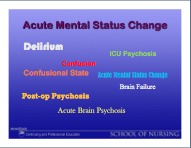Transition to Courses 001, 002, 003, & 131
Background/History on the courses
- Wenyi, original designers
- Juan did a revision 2 years ago (?), no IPS (sometimes Sing)
- lot of graded assignments, grade book overwhelming
- lot of flash elements in 1, 2, 3
- 131 is a little different, all content in HTML, instructor wants a lot of freedom, everything in lessons tab is managed by the instructor, just keep an eye on things, not changing course content
- all instructors are very friendly, willing to work with us, easy to take care of
- they have E-Live sessions (set up by the instructor and students themselves), bi-weekly w/ students, and s-s interaction (links to recordings to T)
- exams: non-proctored, timed; they have been converted into Asssessments
- two to three section, 131 has one section
- Harrisburg is merged with WC version, why?
- PA: Kelly Ball, all communication; PM: Sue Repine
- 131 will have a new textbook in July, Fall revision for Summer ’11 new version
- they run every semester
- instructors are generally very consistent
Check in PACTS for materials, If Kathy doesn’t update me about new versions assume that we’ll use the customized version of the materials.
Generally just the course schedule get’s updated each semseter.
student home pages also need to be updated each semester
peer evals are not used
ask instructors when to start and end specific lesson folders, T’s want to open and close at different times, maybe a week before or after; they want to do this because they want to guard against future cheating
i should ask them for more questions to use in questions pools
Rox and Maria, sec 1 and 2 (002) are slightly different
be sure to pick up the phone!
131 – first book Burns book is coming out in July
revision usually just changes readings
instructor has a lot of ideas for RI courses, might be able to apply them for the summer revision; Tim Wilsie (revision author) 25% revision… Andrea should we beef up the revision? maybe 50%? depends on the changes made to the new textbook
give instructor 131 one month of time before the course opens to make his changes, he’ll make all of the changes except of the syllabus
real-to-real not from DEV space


